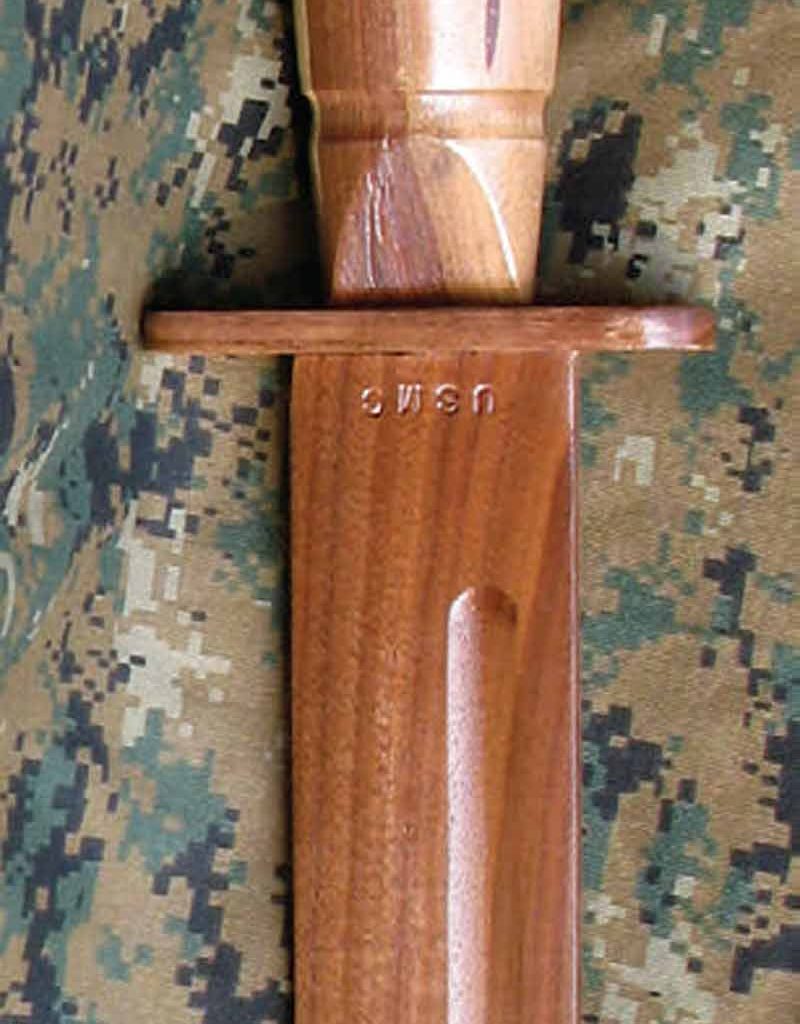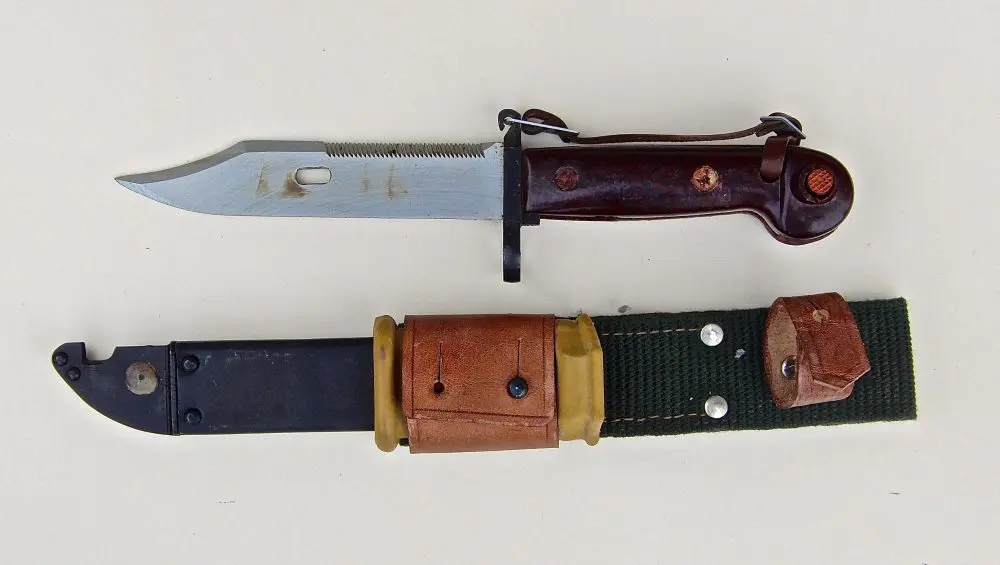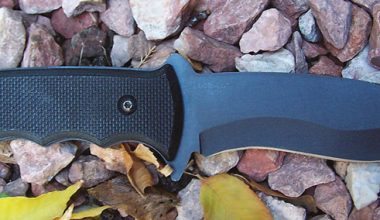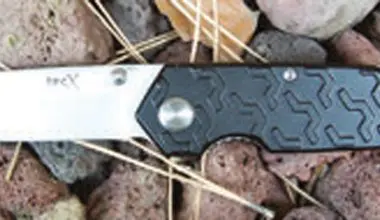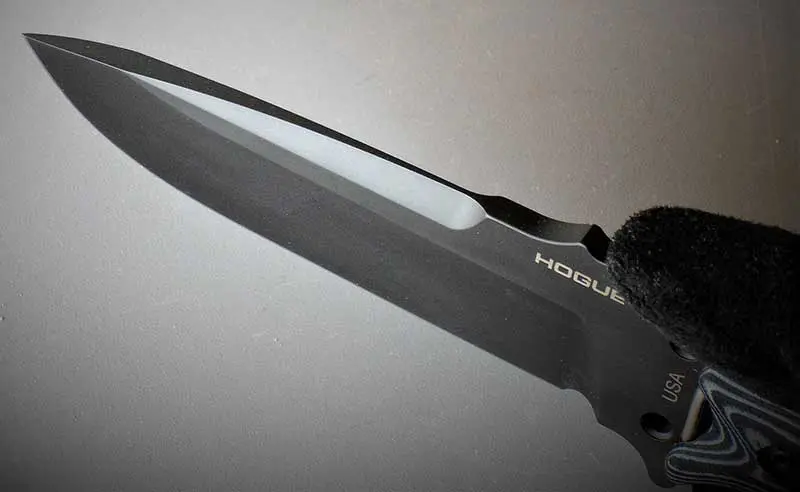

LIKE millions of Marines, I carried the revered KA-BAR issued knife in the field and combat throughout my career as a grunt. It rusted badly and the tip frequently broke off, but this was a highly prized piece of gear not only among Marines, but also for any rear-echelon pogue or “Fobbit” who wanted to look nasty but never venture outside the wire.
You could trade almost anything for one. In short, it is one of a number of historical Marine icons that have a special place in Corps history.
Based on the Bowie design, the Corps adopted the KA-BAR in 1942 as a fighting and utility knife. The seveninch, straight-edge, clipped-point 1.23-pound knife was used by other branches of the military and was unofficially reactivated through several more recent conflicts, including Iraqi Freedom.
For all intents and purposes, it has been replaced by the equally lethallooking modern Marine bayonet, but the KA-BAR still remains the first choice for the many service men and women who carry it as their personal blade option.
It should be no surprise that I was immediately attracted to a pair of beautifully crafted giant wood replica KA-BARs with sheaths in walnut and oak respectively, on the wall of a local gun shop.
Now the size of short swords, they were natural presentation pieces for former military personnel and military memorabilia collectors. I managed to track down the two craftsmen, both locally retired Marine officers: Lt. Colonel Billy T. Skaggs and Chief Warrant Officer Aaron Keller. They work with wood as a hobby.
In addition to the KA-BARs, Skaggs and Keller create almost anything unique in wood, such as 20-sided polygonal-shaped weather-resistant bird houses, miniature dollhouse furniture puzzles cut from one block of wood, turkey calls, and Appalachian Mountains Limber Jack toys, to name a few.
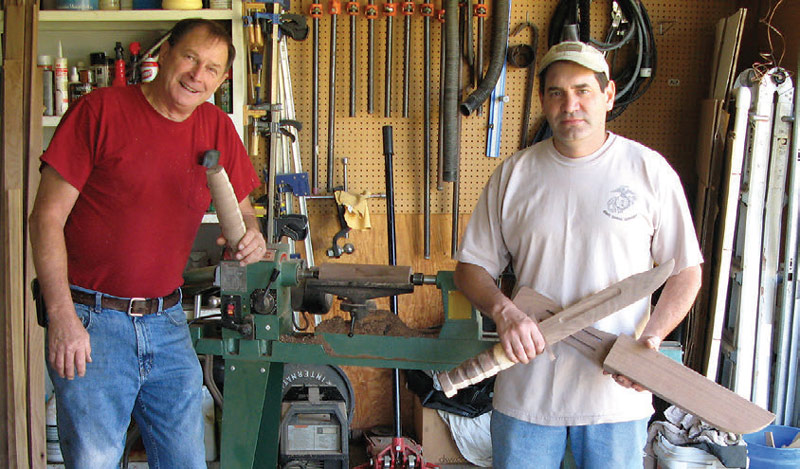
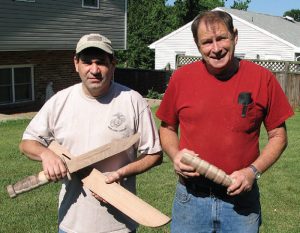
Using local woods, they hand make the replica knives from walnut, oak, cherry and poplar. Once the knives are shaped and sanded, several layers of a proprietary lacquer are applied with a high-volume, low-pressure spray gun. Each layer is sanded and the finished product is hand waxed with furniture paste wax.
Currently, they use the wood’s natural finish, but they may stain it in the future. Keller and Skaggs plan on using “Lacewood” to create a new version whose blade has a look similar to Damascus steel. Mixing woods will be involved, and its sheath will be made with super dark and beautiful “Purple Heart” wood.
Every knife is different, but they can be further personalized with emblems and nameplates. Both men are open to new ideas and I am trying to get them to make a model of the very lethal-looking Marine Corps OKC-3S bayonet.
On average, one knife takes a weekend of work to complete. Depending on the desired wood and custom options, retail prices start at approximately $175.00.
Please note: Each knife is guaranteed for only one vampire.
